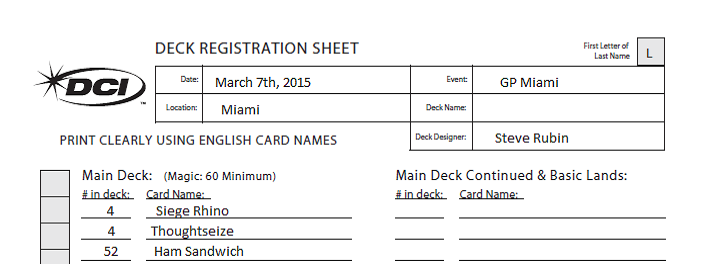Grand Prix Miami is in under a week, and I still have no idea what I want to play.
That doesn’t mean I haven’t been trying things and honing in on what matters.
To show an example of how I approach formats and circle into the right deck to play, these are the principles I’m operating under for the current Standard
format.
Do: Play Powerful Threats
Also known as “Why this Standard format so wide open.”
Or, if you are less interested in the theory and more interested in the application, “OBVOBVOBVOBVOBVOBV.”
This Standard format is so diverse because there are so many powerful cards, mostly threats that can single handedly crush a game.
In the past, there have been issues where all of the best possible cards line up and create a single monster of a deck, while anything but that deck is
basically choosing one similarly powerful card and delusionally hoping to compete. Think:
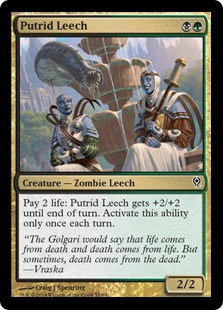
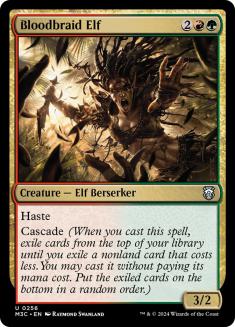
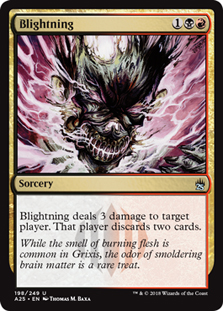

or…
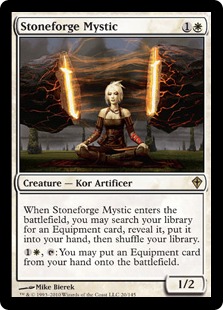
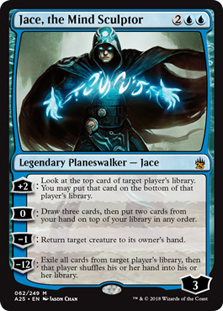
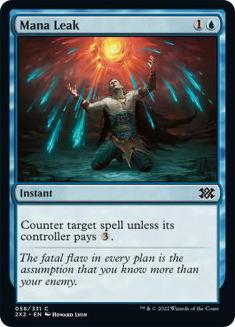

In this format, there is definitely an obvious first choice in terms of raw card power:
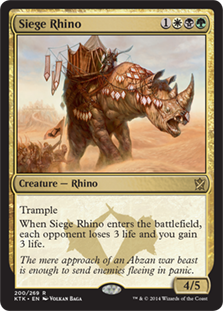
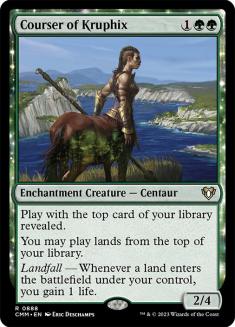
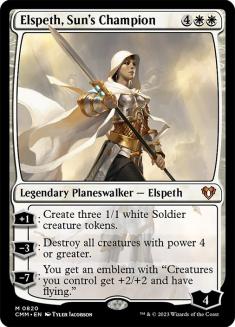

But what if you want to play something else? In past formats, the answer might have been nothing, because every other deck was standing on one pillar. You
could play Jace, the Mind Sculptor against Bloodbraid Elf and friends, but that was your only really good card. You could play Primeval Titan against
Stoneforge Mystic and Jace, but again that was your only good card.
If you don’t want to play Siege Rhino in this format?
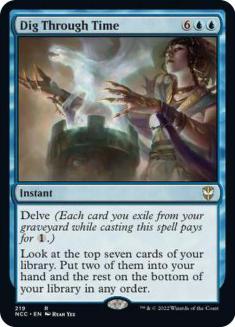
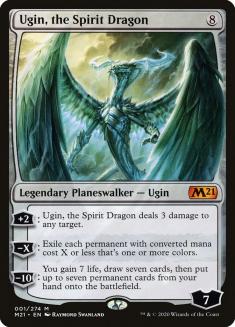
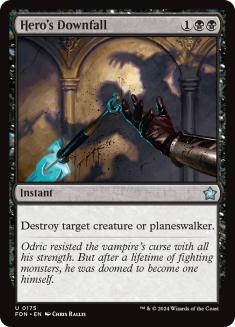
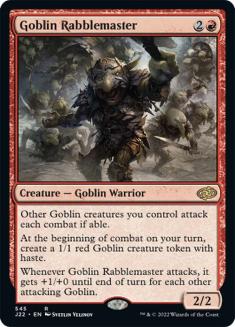
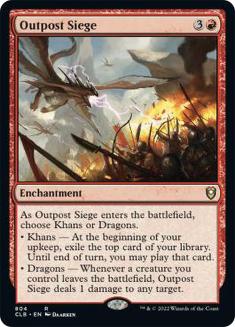
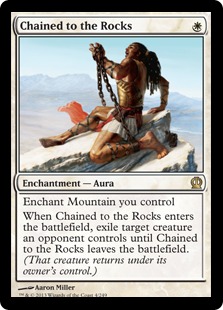

Admittedly a little less raw power but still very close.
These are just the most recently successful archetypes. There are probably twenty or so cards that are around the same power level, and every successful
deck in the format has picked a set of these cards as the core of their deck.
Not playing these cards leads to real issues. Your opponent will play one, and it will outclass entire hands from your deck. I’m not saying there aren’t
cards with undiscovered potential to match the power level required, but you better be real sure you are hitting that tier.
Also note that I keep referring to these cards in the plural sense. You can’t lean on a single powerful card in this format. The difference between cards
simply isn’t that big. With few exceptions in Jeskai Ascendancy and the Heroic shell, there isn’t a Cranial Plating or Tempered Steel that is mana
efficient but just outclasses anything that tries to fight it heads up given the right shell. Consistency in drawing good cards is a big issue. Having more
good cards than your opponent isn’t an assured win, but the person who has more is definitely ahead.
Do: Have Powerful Answers
Every opponent you play against is going to have extremely powerful cards facing off against your powerful cards. Sometimes, their things are going to line
up well against yours, or their threat is the one that holds its own in the heads up and it builds some kind of advantage over time.
You need ways to fudge the numbers when that is the case. You need to be able to take their Elspeth, Sun’s Champion out of action so your Goblin tokens can
actually get through, or just so it doesn’t kill you.
All of the consistent top decks of the format have also featured powerful, broad, flexible answers to compete in these midrange fights. The poster child of
this is Hero’s Downfall, which basically takes out anything, but other examples include Sultai Charm, Abzan Charm, Crackling Doom, Valorous Stance, and
Chained to the Rocks.
I’m not saying other answers aren’t playable, but you need something that just does the job against the field. You can’t afford to be staring down a
Tasigur or Outpost Siege trying to just play as if it doesn’t exist, or find yourself behind in the race against a Mantis Rider without a way to interact.
Obviously, not everything can be a Hero’s Downfall, but there are some low end criteria for what a “powerful” answer is. The baseline I set is being able
to kill an X/5. Specifically, you need your good removal to be able to kill a Siege Rhino, as otherwise the Siege Rhino player can often use their better
removal to stall your plan and just go Aggro Pachyderm on you. Tasigur also falls into this category.
You can also create a set of removal that takes out anything to qualify here, as long as you understand what you are getting into and balance it properly.
Chained to the Rocks for Rhinos, Stoke the Flames for planeswalkers, and Stormbreath Dragons is the set out of R/W Aggro that comes to mind.
Note that this is where W/U Heroic fails in my mind. In theory, the Heroic cards should be able to assemble something that goes over the top of the
baseline threat power level of the format, but with a little disruption and pressure, it is possible for other decks to get the drop on you. At this point,
you don’t have good answers and have to scramble from out of position to get ahead, which exposes you to the blowouts that the Heroic deck has been
carefully designed to play around if possible.
This is also just a general fault with not playing white or black in the format. Temur has a ton of great cards, but the lack of any reasonable answers
really holds it back. No, Ferocious’d Crater’s Claws does not count, and no, Temur Charm that requires a large in play creature already doesn’t count
either.
Do: Have a Way to Pull Ahead in Attrition Fights
So we’ve laid down the first two rules. Have powerful cards, have powerful answers.
When you face off against another deck doing this same thing, which is basically all of them, you will find a lot of scenarios where you are both trading
off cards and end up in a topdeck war. Maybe you get a turn in with your threat, then they draw an answer, then you are back to square one.
Every deck in the format needs a way to pull out of these scenarios, to get materially ahead in some way so that they can actually close out.
The easiest way is to simply have a threat that does it. Play Tasigur, activate it once or twice, and you are significantly ahead. Play an Elspeth, make
three tokens, use those to attack even if the Elspeth dies. This is how Abzan functions. Not only are all of your threats good, but they put your opponent
down cards as soon as they hit the battlefield.
The other is pure and simple card advantage, which is how most non-Abzan decks work on this axis. Most of the card advantage in the format is hindered by
the fact that spending a turn drawing cards when you are behind is a death sentence in a format this powerful, but the delve card draw spells make it so
you don’t have to spend an actual turn on the effect. Abzan and Sultai Charms allow you to use your card draw spell to affect the board if needed. Outpost
Siege is unique in that it is clunky and slow, but the decks casting it are almost always ahead when they do so and can afford to spend the turn pulling
into the mid or lategame.
Don’t: Fold to Ugin
Now we reach the more specific ones, or the rules set by specific cards.
This card on its own changed how the control decks play to the format.
Prior to Fate Reforged, the control decks had this huge gap. There wasn’t really a great end game to build to. You just kinda reached a point where the
game was reasonably in control and hopefully you had the tools to end it. There wasn’t a card that just shut the door once you had mana to cast it. Pearl
Lake Ancient did some work on this front, but it took a lot of mana to be reliable and was easy to waylay with removal or just overrun.
Ugin is not quite Sphinx’s Revelation or Cruel Ultimatum, but it’s close enough for now. It stabilizes a gamestate and provides a threat. Not the best
threat, but good enough.
For other decks, that means the card should be beatable, and that making it better than just an obnoxious sweeper means the control deck has real leverage
going late.
Losing to Ugin can happen in a couple ways.
If you have clunky threats that die to the +2 Ghostfire ability, attempting to recover from an Ugin won’t go well. I guess the same also applies about
small threats, but those have another issue I’ll touch on in a second. Obviously, most of those cards have been removed from the format by Bile Blight and
Lightning Strike, but it’s worth double stating that. Don’t show up with Brutal Hordechiefs.
You also need to keep Ugin from being able to –X multiple times effectively.
The first way to do this is haste. They tap out, you immediately put the Ugin down on counters or down completely. It also is worth noting that a lot of
the decks with haste can really capitalize on a control deck tapping eight mana. Think about doing that versus Jeskai, which is just as likely to kill you
as it is to decide the Ugin is a bigger threat.
The second is just other kinds of removal. And by that, I mean Hero’s Downfall and…. I guess other Hero’s Downfalls. Or Utter End, but killing a
planeswalker isn’t the easiest thing to do. The Ugin will still generate card advantage, but most of the Hero’s Downfall decks will have spent the game
piling up two for ones and will have ground to give there.
The third is colorless threats. See also why Mastery of the Unseen is insane against U/B Control.
The final and probably worst way is to push your threats out in waves that line up well against Ugin’s numbers, specifically getting something that costs
four or more into each wave. Of course, you also need to ensure your assault can’t get blunted at any point by normal removal, and you can’t lean on the
traditional plan of planeswalkers or other two-for-one threats because most of those work through tokens, which Ugin can just -0 and exile. This is
basically me just saying Abzan has real issues with Ugin if you can’t Downfall it.
Don’t: Lean on Cards that Fall to a Single Anti-Linear Solution
Also known as “Don’t lose to Drown in Sorrow.”
There are a few cards in the format that are stop gaps against certain linear strategies. The big ones are Anger of the Gods, Drown in Sorrow, and Back to
Nature.
Sometimes you can get people who aren’t playing those cards. If you find a deck that is positioned to do that, go ahead and get people.
However, if you think people are going to be able to have the answer that gets you, playing this game is not really a great idea. Not only are the
individual cards your opponents have often good enough to beat the linear strategies, but just getting swept post-board is not a good way to go.
If you are going to play a deck that is soft to a card from this category that your opponents are likely to show up with, make sure you have a plan. That
could be how R/W Aggro stretches up into Stormbreath Dragons and Sarkhan, the Dragonspeakers to present threats that don’t die to Bile Blight or Drown in
Sorrow, how Jeskai Tokens is usually able to win with only a few threats and not over extend into a cheap sweeper, or just the simplest plan of “play a
different deck.”
One of the odder cards from this category: Ashiok, Nightmare Weaver. There are a few decks that can really just fold to that card, specifically green
creature-heavy midrange like Abzan Aggro or Temur. While most of these decks have built in plans via haste or Hero’s Downfall, it is worth remembering that
card exists for purposes of sideboard plans or just general deck configuration.
Don’t: Leave Home Without Enchantment Removal
This wasn’t a huge issue before this last set. In fact, I’m not even sure it was an issue two weeks ago, mostly because the enchantments played were
creatures like Courser of Kruphix that were easy to handle without a dedicated, potentially narrow answer.
But we’ve seen massive developments on this front. Either you need to kill Outpost Siege to avoid getting buried in card advantage by R/W Aggro, or you
need to kill Mastery of the Unseen out of R/W or Abzan, or anything with white mana sources honestly. Even just getting a Chained to the Rocks at the right
time is impressive.
It’s possible that this is a little preemptive and that people might re-level by cutting the relevant enchantments, but considering the raw power of
Outpost Siege and Chained to the Rocks is actually the draw to R/W, I find it a bit doubtful that it will happen that quickly.
I’m not exactly sure where these conditions will lead me, but I definitely know a good deck when I see one. This next week will be spent scouring lists
from all sorts of sources for ideas, and testing the things I don’t know how to evaluate up front.
If all else fails, at least I have a good backup plan.
